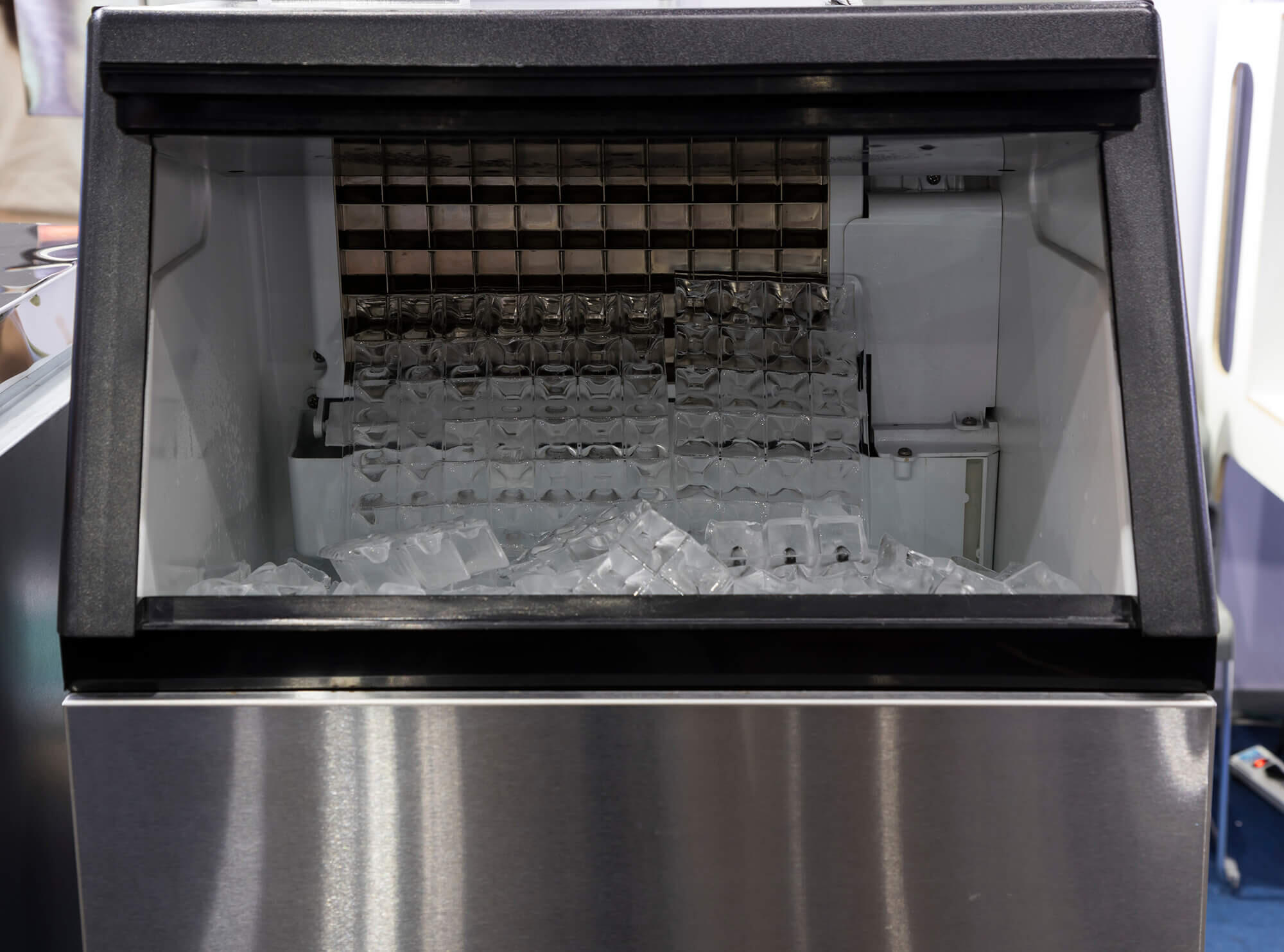
THE PRODUCT:
Automatic commercial ice makers (ACIMs) make and harvest ice and may include a means for storing and dispensing ice. They are typically found in hotels, restaurants, health care facilities, and educational settings. Ice makers include both batch-type and continuous-type equipment. Batch-type ice-makers operate with alternate freezing and harvesting periods and typically produce cube-type ice. Continuous-type ice-makers continually freeze and harvest ice at the same time and primarily produce flake or nugget ice.
THE STANDARD:
The current standards for ACIMs took effect in 2018. The standards include energy use limits for all ACIMs and condenser water use limits for water-cooled equipment. In 2023, DOE proposed amended standards for ACIMs that would reduce energy consumption by up to 17% depending on the product category.
In May 2025, DOE proposed to rescind the water efficiency requirements set by rulemaking for ACIMs, reverting the requirements to those in the statute.
*The maximum energy use is expressed as the energy consumption (kWh) per 100 pounds of ice. The maximum condenser water use is expressed as the gallons of water used per 100 pounds of ice.
KEY FACTS:
The minimum amount of water necessary to produce 100 pounds of ice is 12 gallons. However, additional water is consumed with batch-type machines, largely due to any remaining water often being purged after harvest cycles. Technology options for improving the energy efficiency of ice makers include improved heat exchangers and more-efficient compressors, fans, and motors.
Filings
Timeline
| Federal | Date |
| Proposed Rule Issued | 2023 |
| 2nd Federal Standard Effective | 2018 |
| 2nd Federal Standard Adopted | 2015 |
| 1st Federal Standard Effective | 2010 |
| 1st Federal Standard Adopted | 2005 |
| EPACT Initial Federal Legislation Enacted | 2005 |